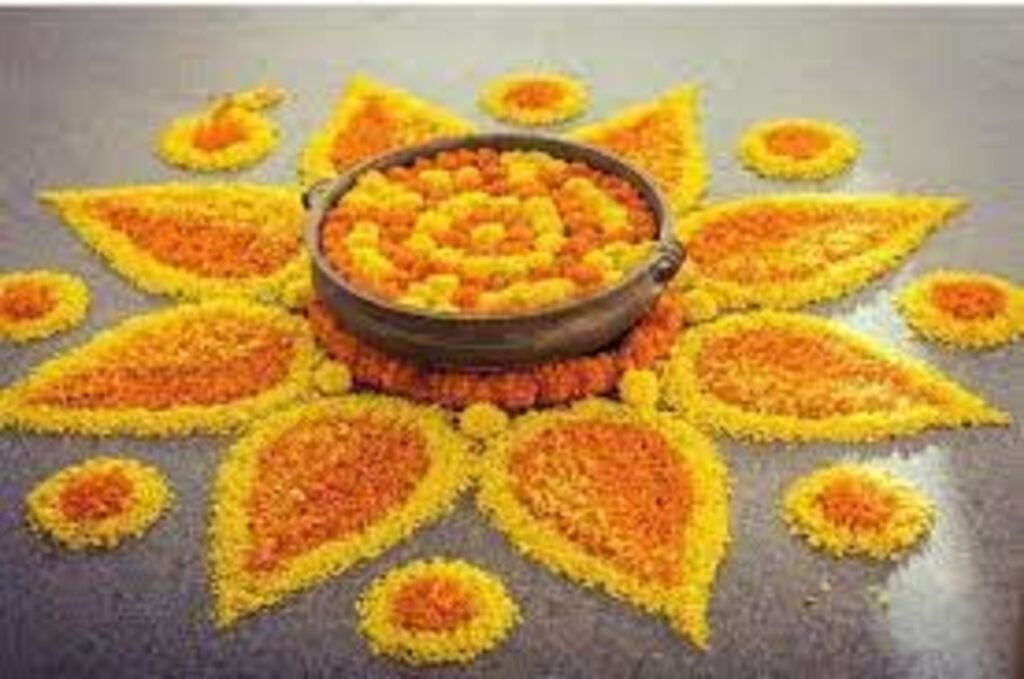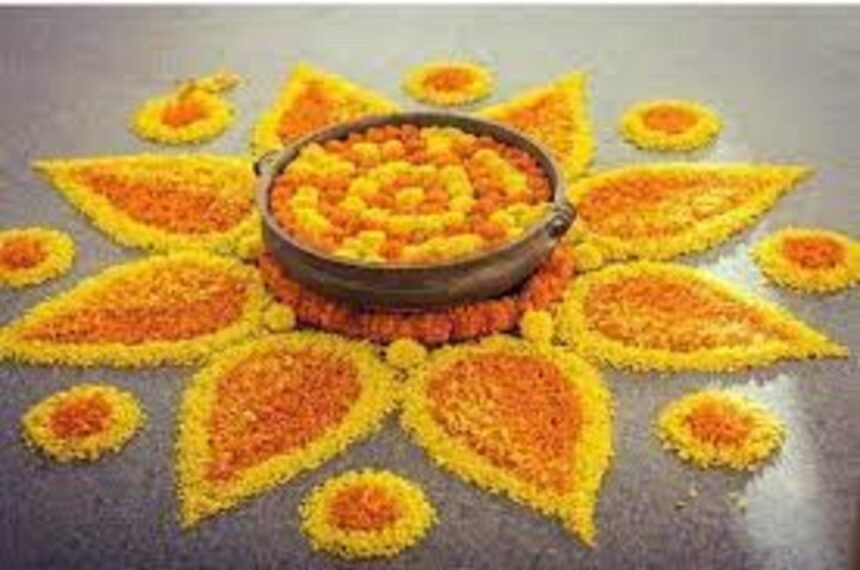Introduction:
As the festive season approaches, the tradition of decorating homes with vibrant rangoli designs takes centre stage. However, in an era of increasing environmental awareness, it’s crucial to celebrate our traditions in ways that are mindful of our planet. Embracing eco-friendly practices when making rangolis not only adds a unique touch to your festivities but also contributes to a greener and more sustainable future.

1. Choose Natural Ingredients:
Replace synthetic colours with natural alternatives such as turmeric, rice flour, beetroot, spinach, and flower petals. These ingredients not only provide a range of colours but are also biodegradable, ensuring that your rangoli doesn’t harm the environment.
2. Reusable Stencils and Templates:
Instead of freehand designs, opt for reusable stencils or templates. These can be easily stored and used for multiple occasions, reducing the need for creating new designs every time and cutting down on waste.
3. Upcycled Materials:
Incorporate upcycled materials into your rangoli creation. Items like old bangles, buttons, and fabric scraps can add texture and uniqueness to your design while repurposing items that might otherwise go to waste.
4. Rangoli in Pots:
For an innovative twist, create rangolis in pots or planters using coloured sand or natural materials. This not only adds a festive touch to your garden or balcony but can also be later used to nourish your plants.
5. Biodegradable Decor:
Include biodegradable elements such as flower petals, leaves, and even small branches in your rangoli. These natural elements not only look beautiful but also return to the earth harmlessly once the festival is over.
6. Digital Rangoli:
Consider creating digital rangoli designs using various apps or software. This eliminates the need for physical materials altogether while still allowing you to enjoy the art form in a more sustainable way.
7. Minimalist Approach:
Embrace minimalism by creating rangolis with simpler designs. This reduces the need for excessive materials and helps you focus on the elegance of the design itself.
8. Educate and Share:
Spread awareness about eco-friendly rangoli practices by sharing your creations on social media platforms along with information about the benefits of sustainable rangoli making. Encourage others to follow suit and make a positive impact on the environment.
Conclusion:
Festivals are a time of joy, togetherness, and celebration of tradition. By adopting eco-friendly rangoli-making practices, we can preserve the beauty of our customs while safeguarding the environment. These simple yet impactful changes not only enhance the artistic aspect of rangoli creation but also contribute to a more sustainable and responsible way of celebrating our cultural heritage. So, let this festive season be a stepping stone towards a greener future.











